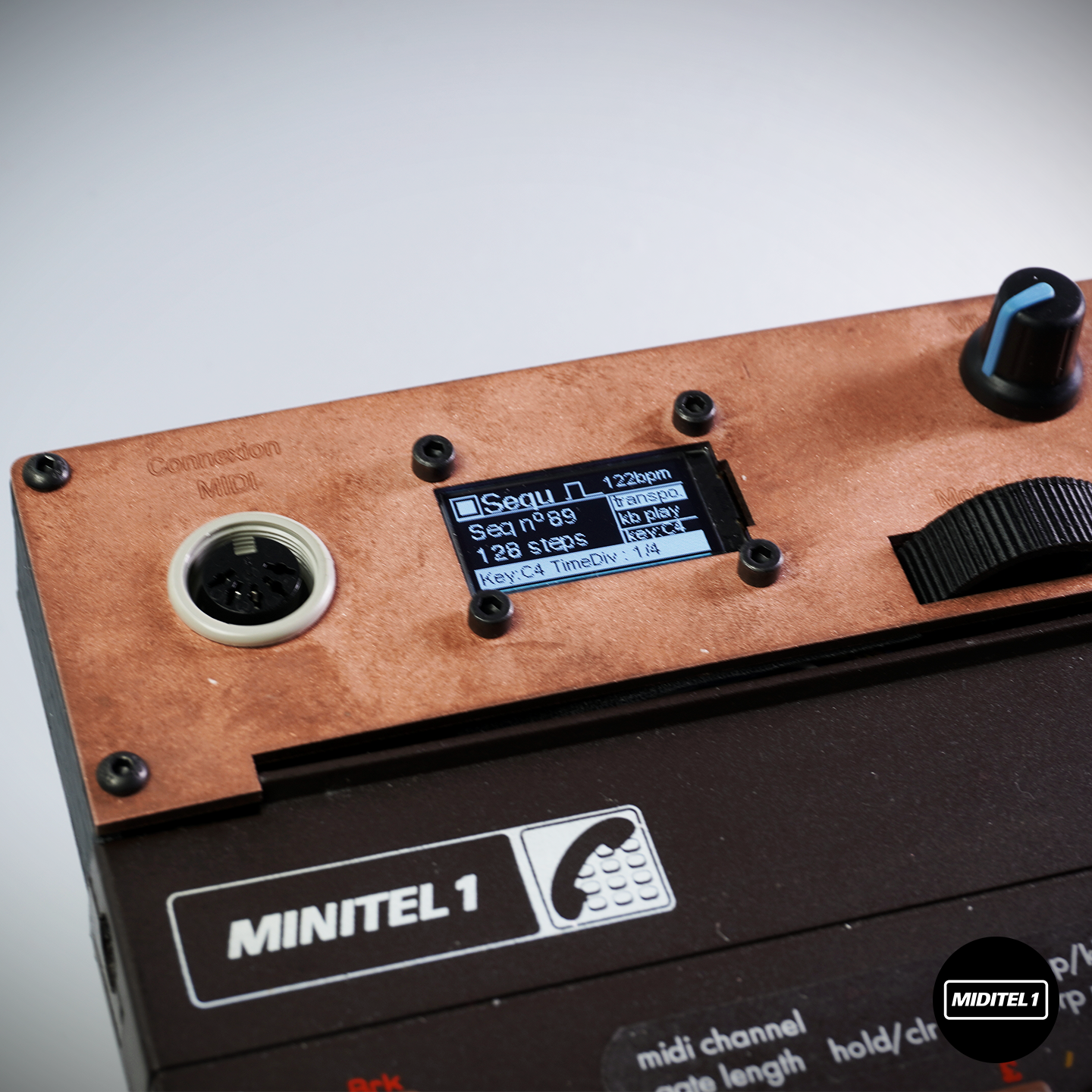MIDITEL
The Miditel is a MIDI controller made from a Minitel keyboard with a keyboard layout inspired by the accordion.
The trigger to start building this project was the frustration of using a MIDI controller like the Arturia Keystep with such a lack of user interface feedback and a lack of sequencer on multiple MIDI channels. With that in mind, I wanted to create my own MIDI controller but wasn’t sure where to start.
After watching a video of Hainbach Elka Solist 505 that was featuring an accordion keyboard. The layout of this keyboard directly reminded me computer keyboard with the key in a Quincunx pattern.
This is where all the ideas regrouped themselves: Creating a Midi keyboard with a good user interface with a computer keyboard to match the chromatic accordion layout.
The only thing that was missing was the computer keyboard. And just by turning my head, I saw the old Minitel that was taking the dust in my workshop. I had now everything in hand to start this awesome project.
The first step of the build was to open the old Minitel and extract the keyboard. The keyboard use a flex cable to connect to the mother board of the Minitel. This cable was all oxidized, I decided to cut it the smallest possible and solder wire to reduce the risk of further oxidation.
Quickly it was possible to connect the Miditel keyboard to a Raspberry Pico on a breadboard and try to retrieve keystrokes. To do so, I had to first understand how the matrix keyboard layout works. I found the information I needed on entropie.org.
After connecting the keyboard, I wired the Midi input, potentiometers for modulation wheels, pitch bend and bpm rate, and the little oled screen.
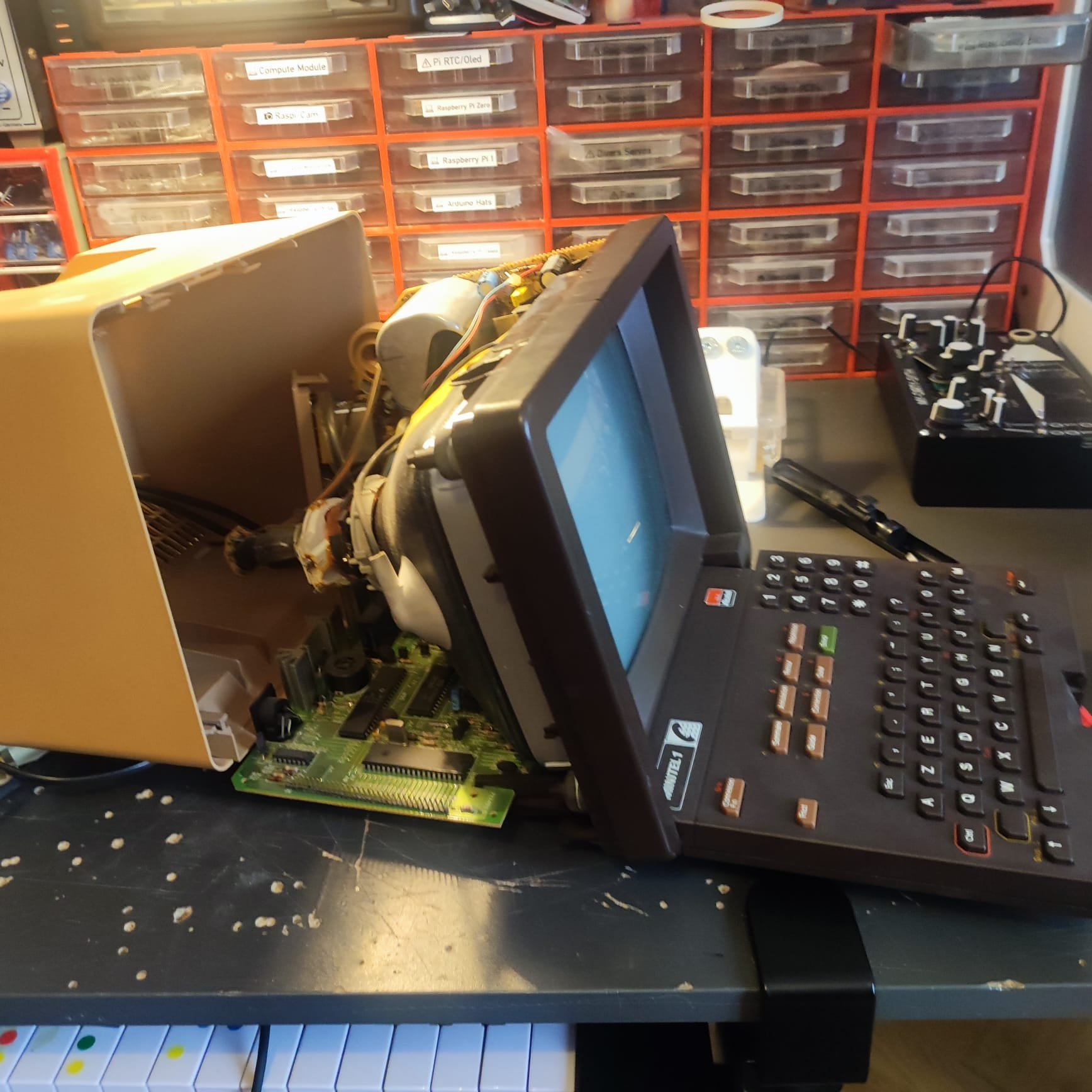

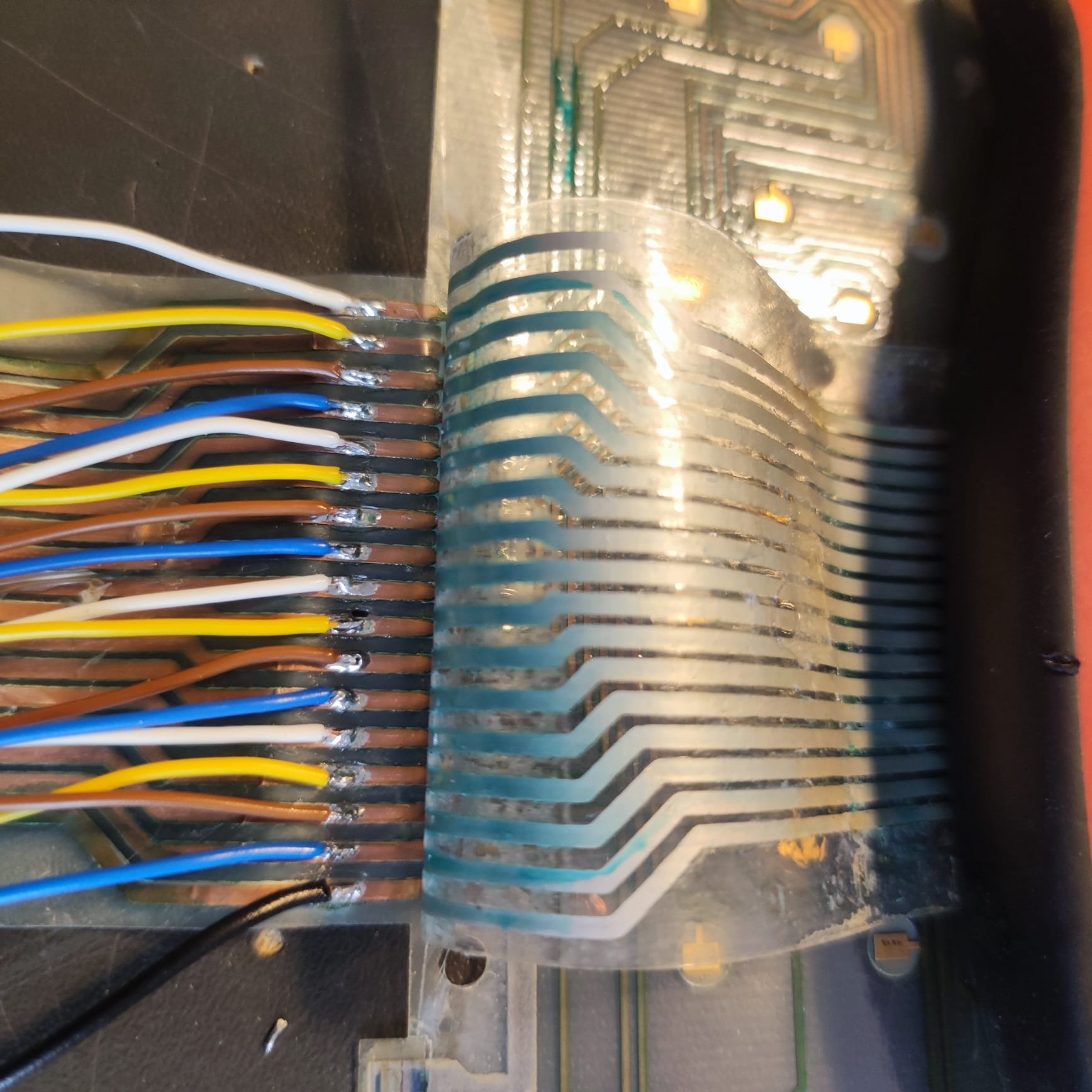
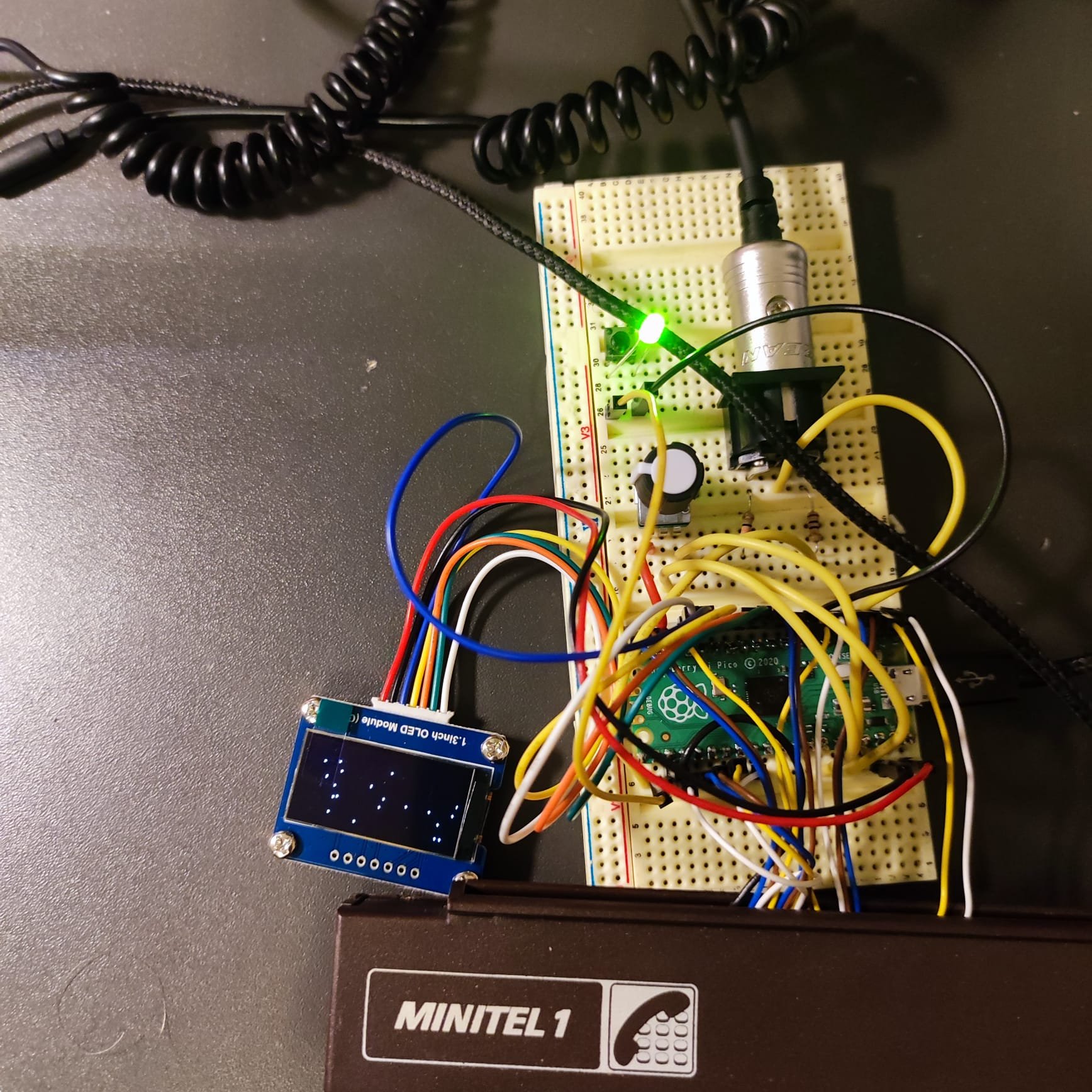
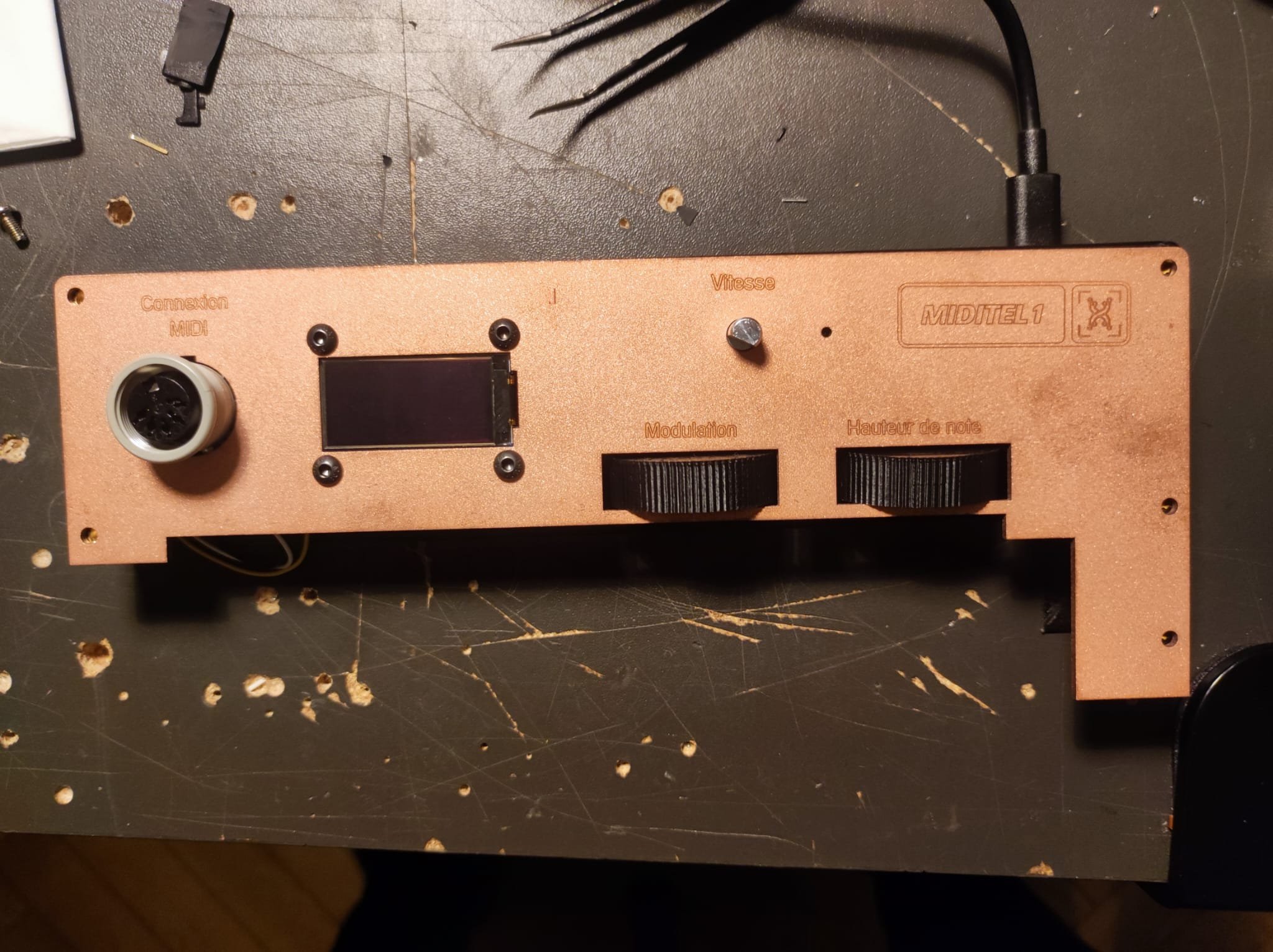
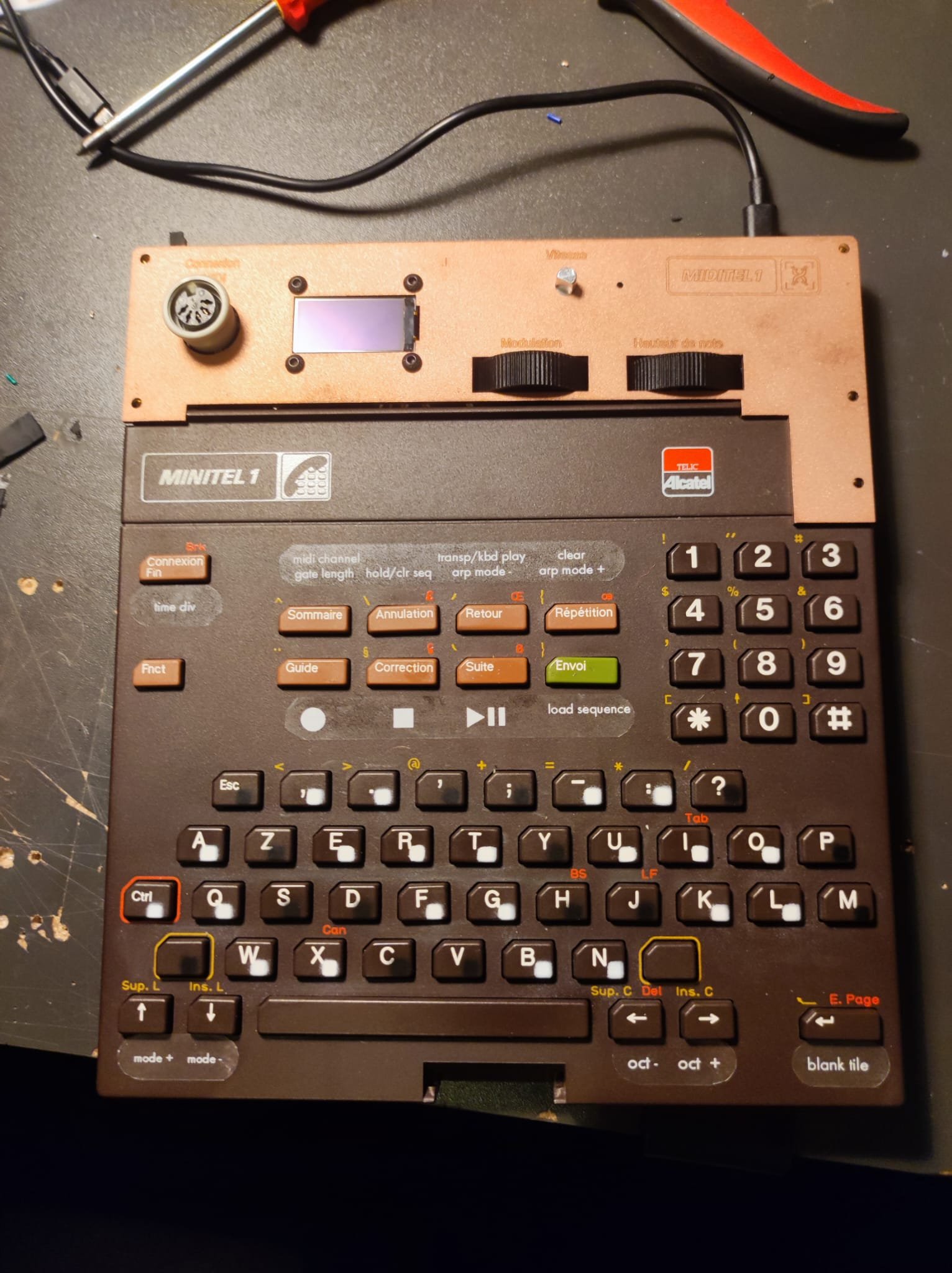
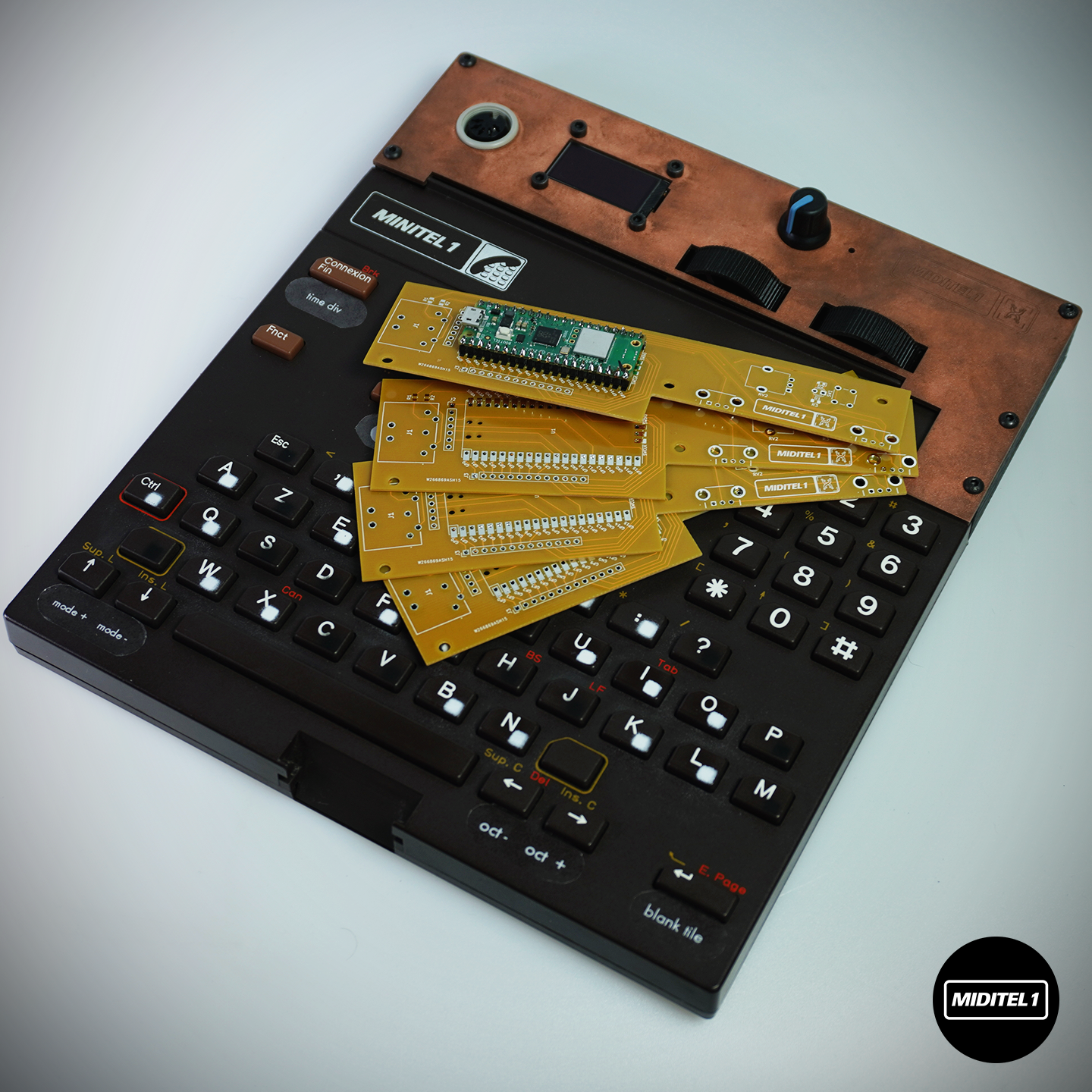
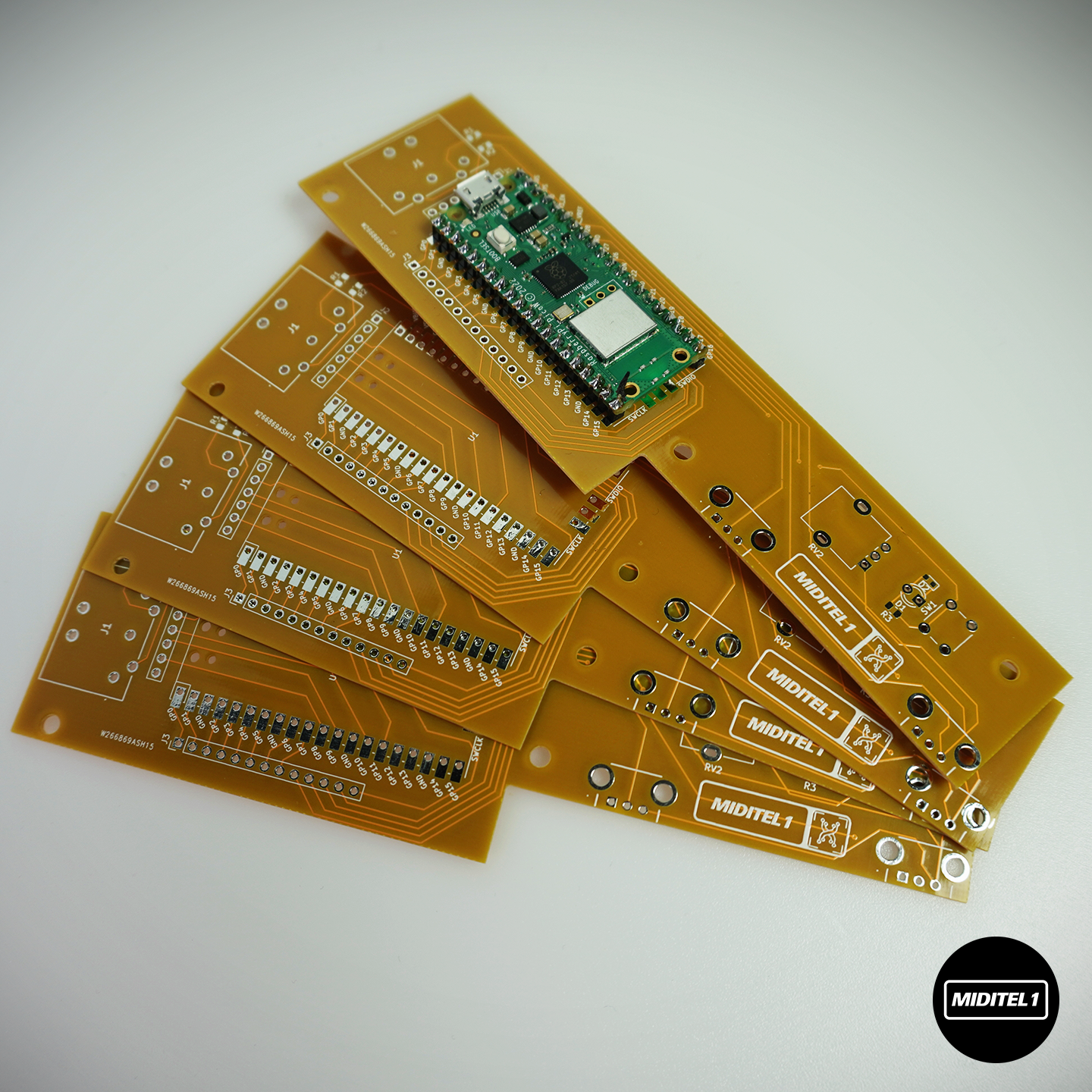
After some success with my prototype on the breadboard, I designed a PCB and a front panel to make the Miditel a reality.
The front panel is made out of bead copper with a bead-blasted finish and some laser engraving. I chose copper to fit the Minitel keyboard color. The front panel will age quickly but I accepted this and it will slowly gain some retro look with the oxidation of the front panel.
The PCB simply connects the Raspberry Pico to Potentiometers, to the Midi connector through an optocoupler interface, and to the Oled Screen.
Both PCB and front panel were manufactured using PCBway services.
On the top front panel, you can find a bpm knob and two horizontal potentiometers inspired by the Moog Sonic Six to control pitch bend and modulation.
Its functionalities are highly inspired by the Arturia Keystep but with a little screen making it way simple to configure. With the MIDITEL you can:
- Simply play
- Use an arpeggiator
- Use a sequencer
- Use a multi-sequencer (one sequence per midi channel)
Here are a few key features:
Simple play
BPM rate
Gate length
Time Division (1/4, 1/8, 1/16, 1/32, 1/4T, 1/8T, 1/16T, 1/32T)
Select Midi channel
Arpeggiator
Different Arpeggiator patterns (up, down, up-down, random, etc)
Hold
Sequencer
Up to 128 saved sequences
No limit of steps
Transpose
Multi-sequencer
Play one sequence of the sequencer per midi channel



